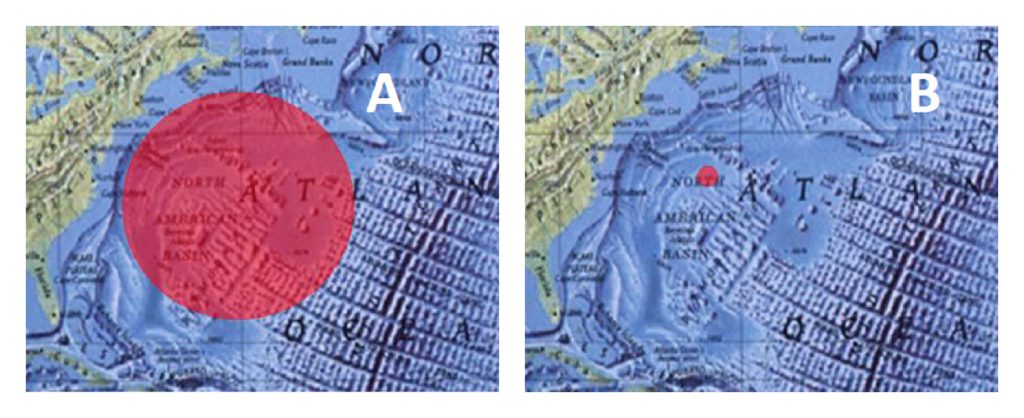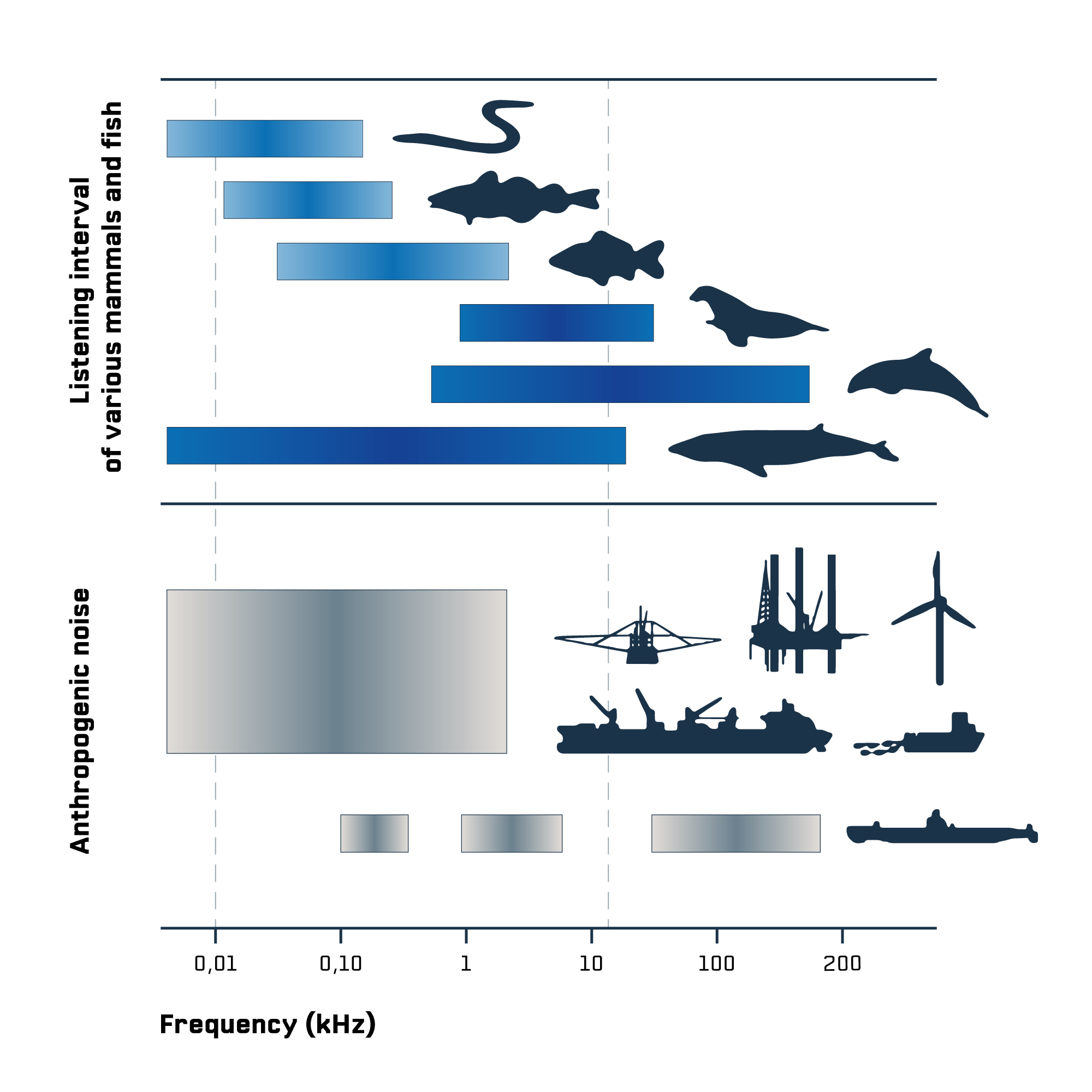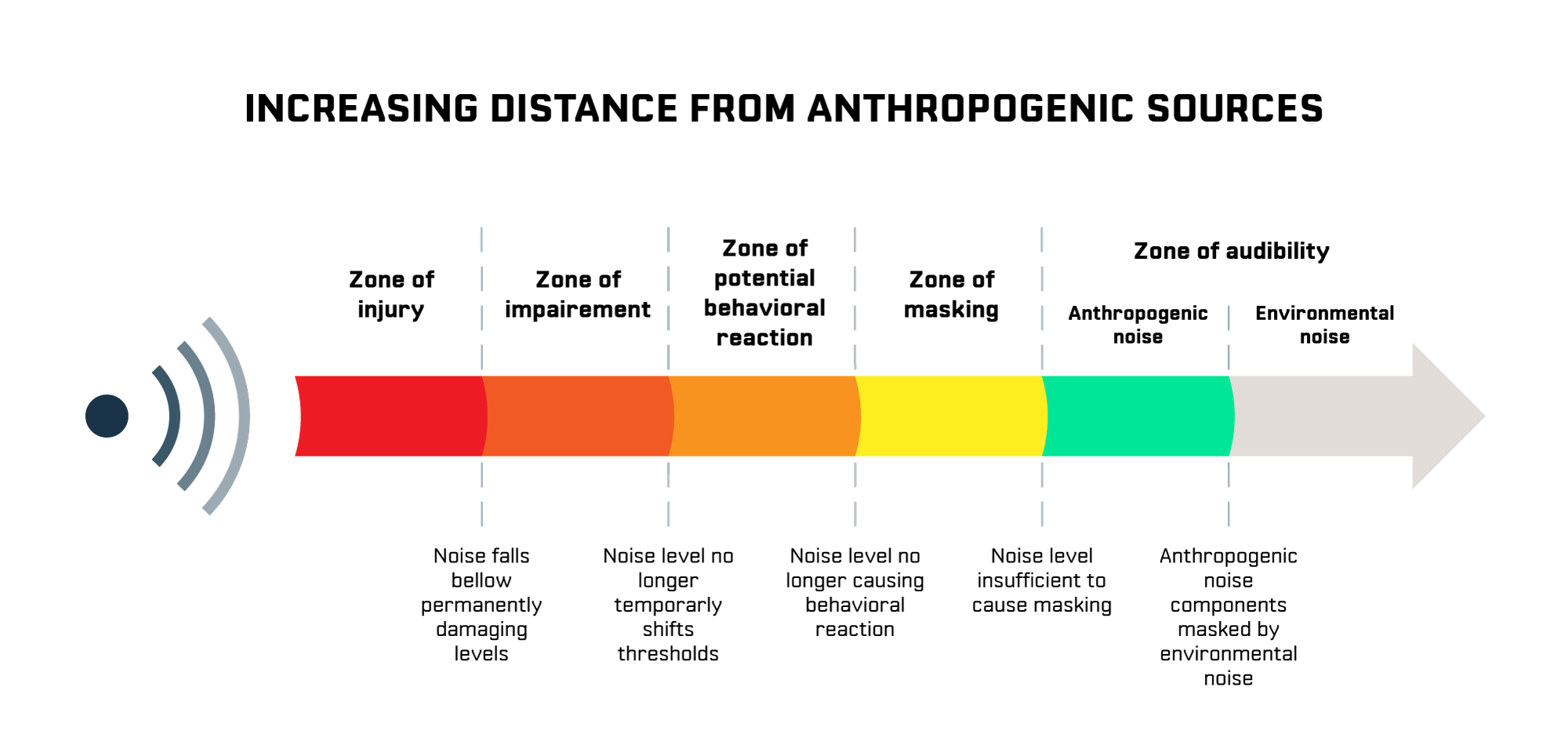Context
Effect of Noise on Marine Species
The average level of noise in the busiest seas has been increased by almost 20dB over the past 50 years, i.e. 100 times more sound power and a 10 times wider range.
The noise radiated by vessels is a major factor in this increased underwater noise.
Near the routes followed by ships are marine areas where protected species live and / or which represent areas of major biological interest (reproduction, nursery, feeding, etc.).
It is now scientifically demonstrated that anthropogenic underwater noise has an impact on marine fauna, both on marine mammals and on fish, turtles, invertebrates and cephalopods.
Noise impacts from shipping is the reduction of communication and detection ranges.
This leads to increased stress and increasing difficulties for mating, catching prey, and territory defense.

A growing societal imperative
More and more social and environmental protests.
More and more associations and movements are advocating for change:
They want:
- An international consensus aiming at controlling, containing and reducing underwater pollution’s impact;
- To promote the principle of precaution regarding underwater noise by ordering a precise management of intense noise sources;
- To introduce the debate and act to solve tricky situations and to protect highly threatened species which are already suffering from underwater noise pollution;
- These movements influence world legal orientations and affect industrial activities (fishing, oil and gas etc…).
Recommendations have been established to encourage the reduction of underwater noise generated by human activities. European regulations will gradually encourage the implementation of ambitious actions in this area via, among others, the EU Marine Strategy Framework Directive (MSFD) of 2008 and its future versions.
Limits on radiated noise are being established, with for certain countries such as Canada, the introduction of a strong financial incentive (entrance fees to the port, tax, etc.), but not yet an emission certificate.
Legacy of the AQUO project on PIAQUO
The European project AQUO (FP7)’s main legacy is:
- Identification of efficient technical solutions to reduce noise generated by individual vessels, especially cavitation noise;
- Development of tools to produce real-time and statistical maps of shipping noise;
- Passive acoustics technologies to map species distribution are mature and are considered as efficient technologies to manage underwater noise.
Technological solutions exist but were never deployed as a coherent approach to show their capacity to answer to this issue.

